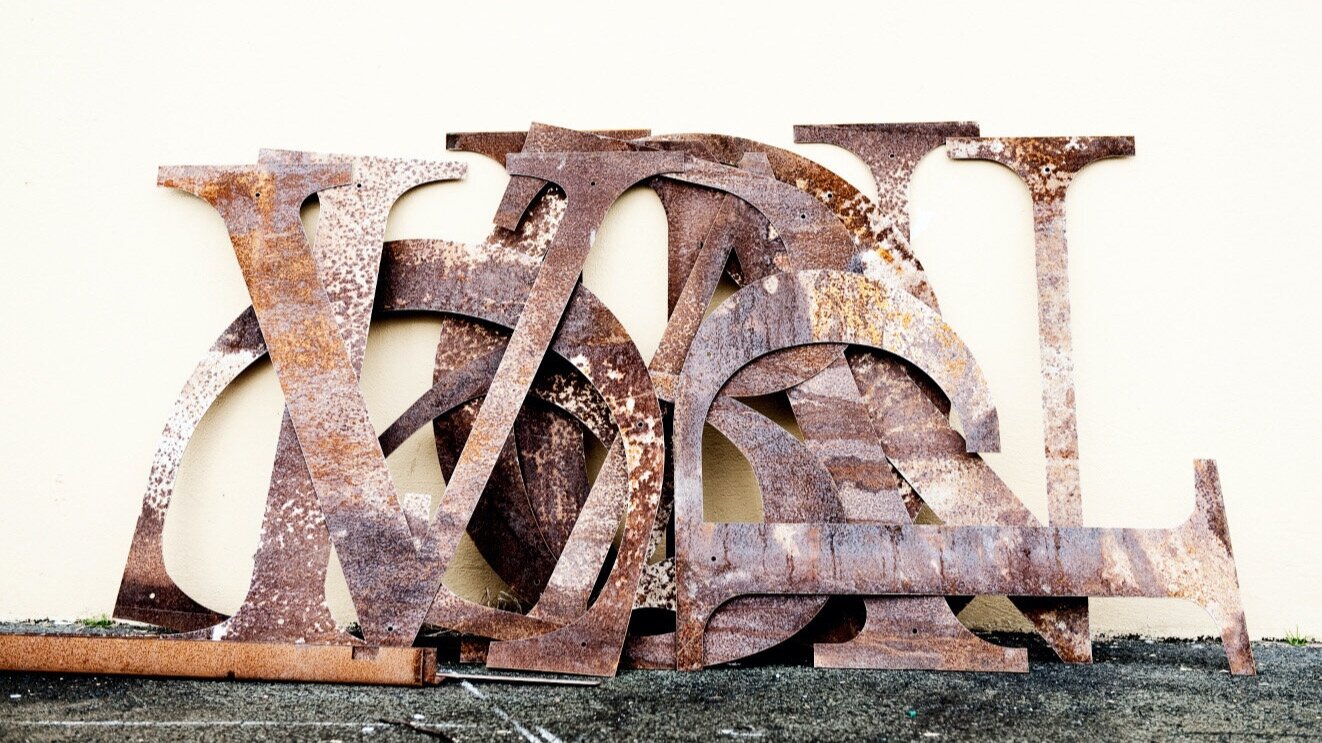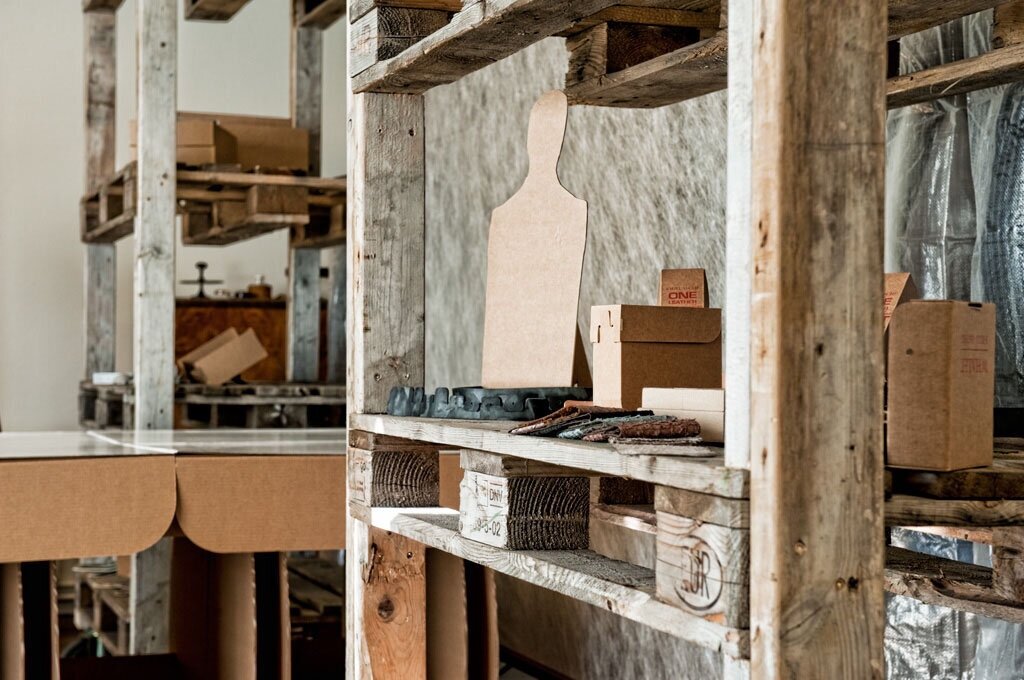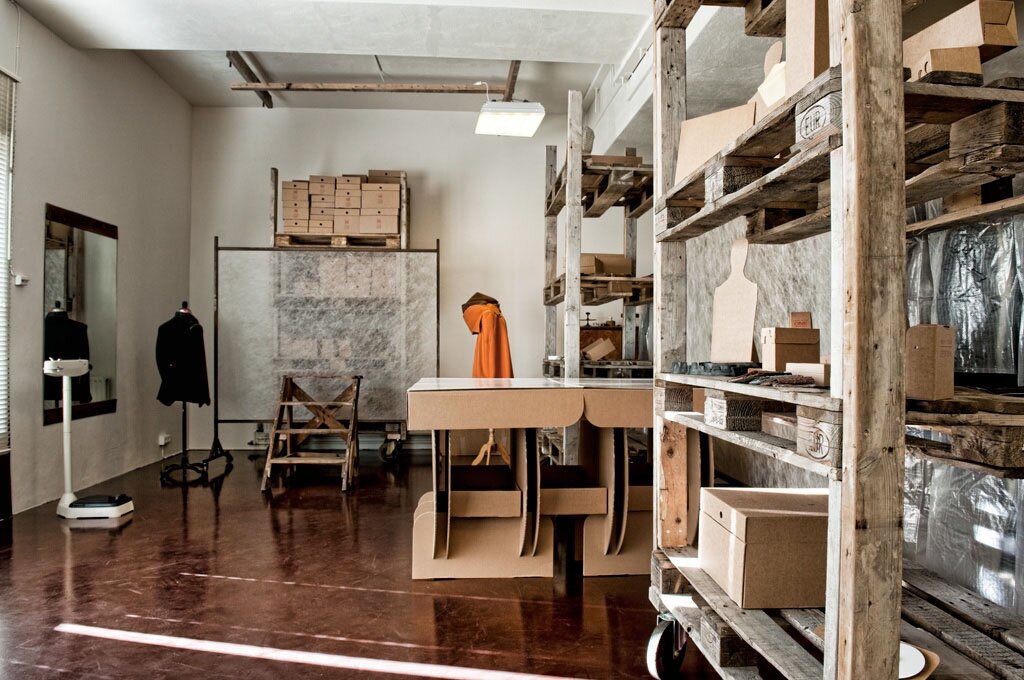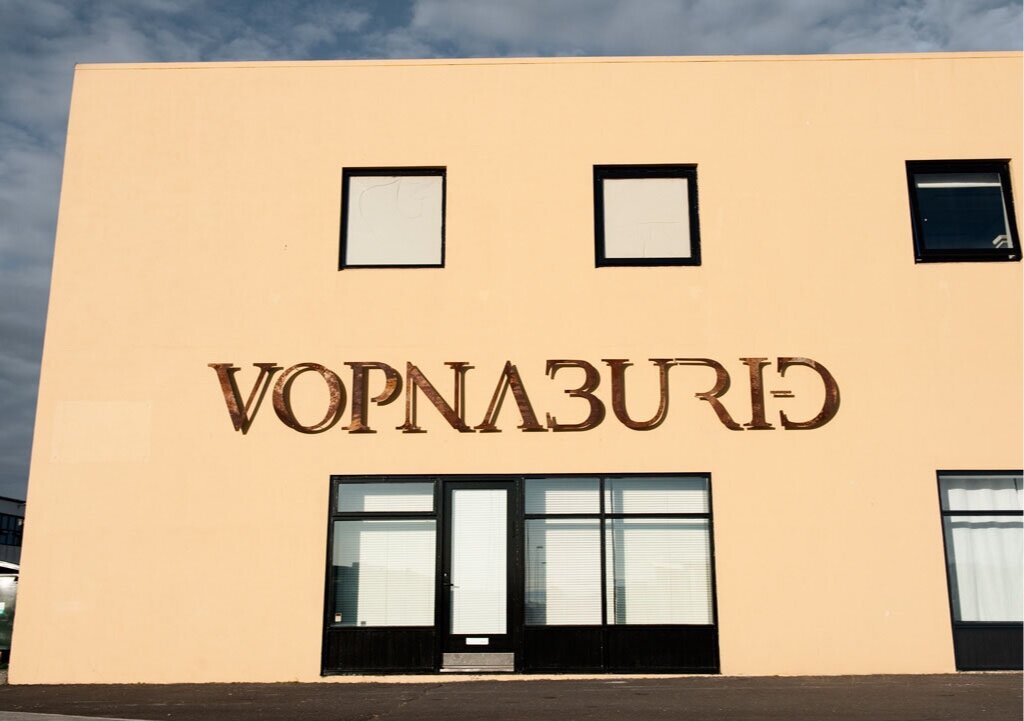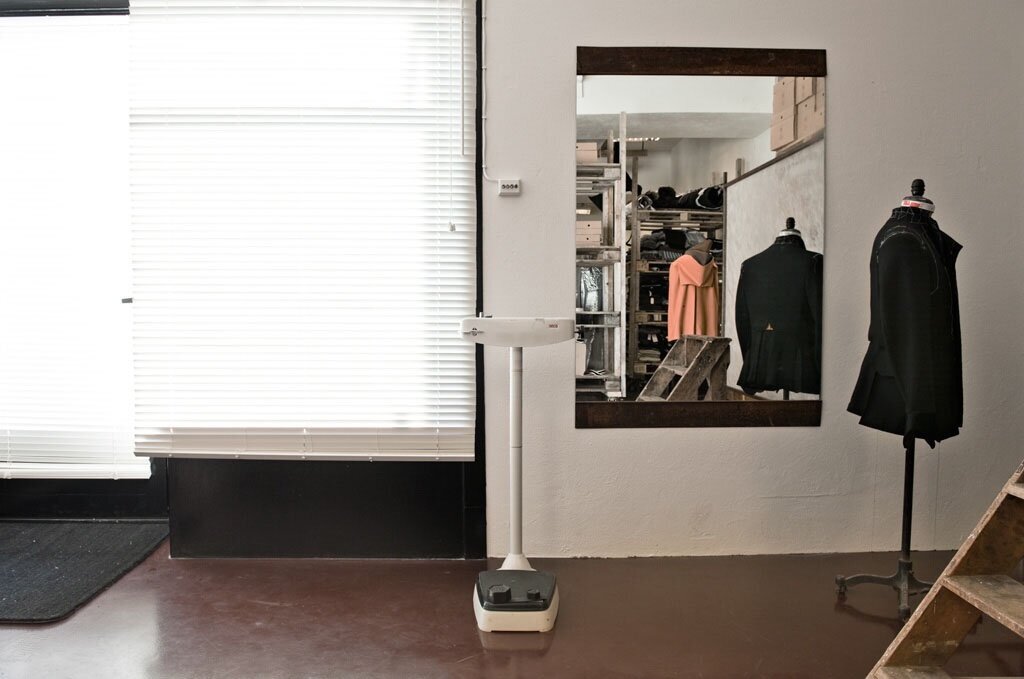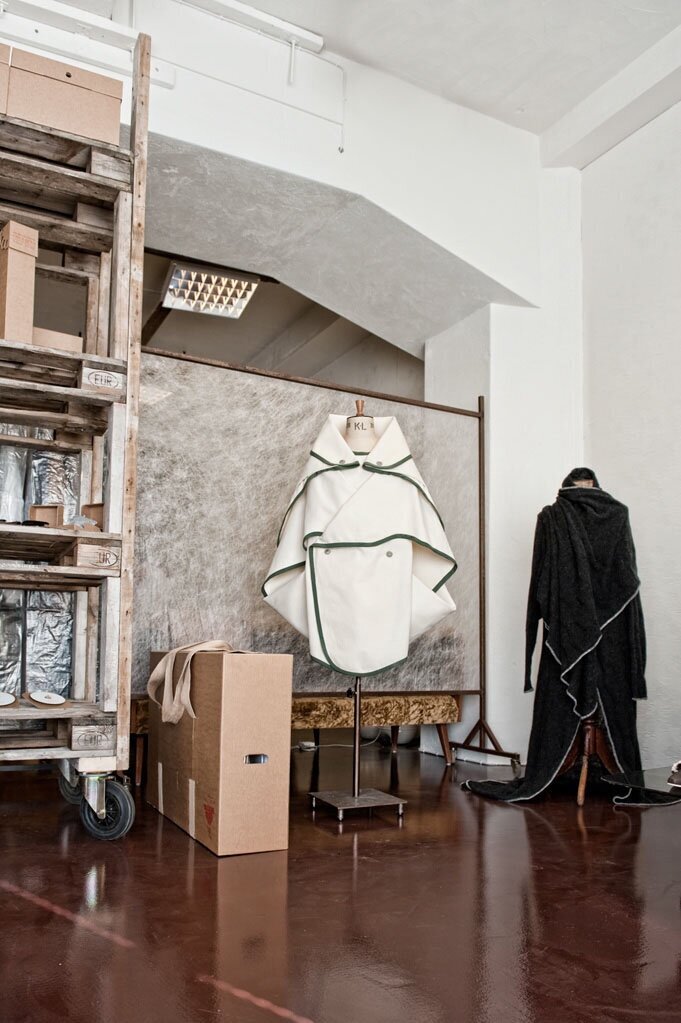The Armoury
The Armoury
Front of House
The Armoury was located amongst the retrofitted once-rusting ships and abandoned private fisheries of Reykjavik’s Fishpacking District. The store presented Sruli Recht’s arsenal of non-products and the illustrated paper products of Megan Herbert, and the adjoining studio space was the centralised site of production.
Photography - Marinó Thorlacius
―
The Armoury offered the complete collection of Sruli Recht non-products, which are caught somewhere between product design, weapons manufacturing, corroded tailoring and shoe making. The non-products – including umbrellas, bulletproof scarves, tables, bags, belts and boots – incorporate such materials as concrete, diamonds, skin and wool.
Megan Herbert’s work encompasses detailed hand-illustrations and intricate paper cuts, brought together by a carefully considered narrative thread. Her wrapping paper collection, printed on Icelandic deadstock, represents elements we all as human beings share – the blood coursing through our veins, the bones helping us to stand strong, the food that nourishes us, the air filling our lungs, and the traditions that shape our history.
We opened the store to create an uncompromising space to show both Sruli and Megan’s work. In a sense it is was a flagship store, a place to present the collections exactly as we see them, and also to serve as a forum to experiment with new ideas. I have been selling in stores for some years, and a lot on-line, but it really came time to bring it all together in one space in the town we live in. So really it is part store, part showroom and part control group.
The store is in an area called Grandi which used to be the area that the fish were dragged up from the boats. There are very few companies out here still operating directly in the fish catching industry… it is mostly large companies selling or fixing boat parts and nets, or processing fish into oil. Recently some small businesses have moved out here [Kria Cycles, Marino Thorlacius] and a younger creative feel has been growing. So we called it the Fishpacking District, which is what the Grandi area is known as in Icelandic.
We put it out here a little way from the main shopping strip downtown as a way to slow down the visitation to some degree so that a client is given all the time and information they need, making the experience more personal. ~
Everything used in putting The Armoury together was reclaimed from the now abandoned construction sites around Reykjavík – from the dried and weather-worn shipping palettes to the long wood scaffolding, old metal frames, steps and wheeled bases.
The Armoury sign was made from discarded rusted roofing sheets and cut to shape with a water jet. To create the colour of the floor we mixed a hue somewhere between blood and rust – an overall theme and tone for the store. As we stripped away the former layers of the room its beautiful structure and colossal concrete beams emerged and became the grand highlights that now define the space. The high walls are lined with a patterned corrugated cardboard, and the industrial castors were bestowed by the custodial facility from their inoperative waste containers. Hidden above a floating ceiling were old crucifix-shaped timber girders that supported the structure from which we now suspend the lighting.
When walking into the store, we aimed for a feel that was like entering a warehouse storeroom where all the secrets are hidden. The textures of the fittings and walls are rough, matte, and light, which highlight the strong forms and colours of the products and offsets the deep tones of the floor. All of the fittings in The Armoury are mounted on casters for the purpose of altering the layout for new projects, products and performance. The shelves, built from snow bleached construction site timber and weather beaten shipping palettes, reach to the ceiling. The interior of The Armoury is a filtered reflection of its surrounding environment.
